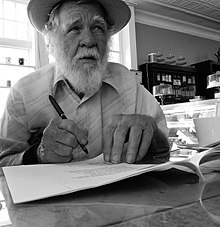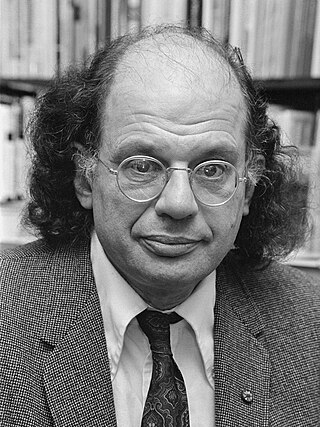
Irwin Allen Ginsberg was an American poet and writer. As a student at Columbia University in the 1940s, he began friendships with Lucien Carr, William S. Burroughs and Jack Kerouac, forming the core of the Beat Generation. He vigorously opposed militarism, economic materialism, and sexual repression, and he embodied various aspects of this counterculture with his views on drugs, sex, multiculturalism, hostility to bureaucracy, and openness to Eastern religions.

Jean-Louis Lebris de Kérouac, known as Jack Kerouac, was an American novelist and poet who, alongside William S. Burroughs and Allen Ginsberg, was a pioneer of the Beat Generation.
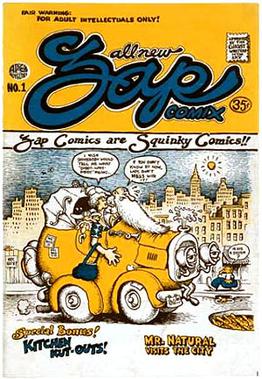
Underground comix are small press or self-published comic books that are often socially relevant or satirical in nature. They differ from mainstream comics in depicting content forbidden to mainstream publications by the Comics Code Authority, including explicit drug use, sexuality, and violence. They were most popular in the United States in the late 1960s and 1970s, and in the United Kingdom in the 1970s.

The Beat Generation was a literary subculture movement started by a group of authors whose work explored and influenced American culture and politics in the post-World War II era. The bulk of their work was published and popularized by Silent Generationers in the 1950s, better known as Beatniks. The central elements of Beat culture are the rejection of standard narrative values, making a spiritual quest, the exploration of American and Eastern religions, the rejection of economic materialism, explicit portrayals of the human condition, experimentation with psychedelic drugs, and sexual liberation and exploration.
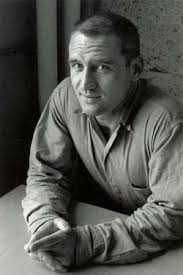
Neal Leon Cassady was a major figure of the Beat Generation of the 1950s and the psychedelic and counterculture movements of the 1960s.

Furthur is a 1939 International Harvester school bus purchased by author Ken Kesey in 1964 to carry his "Merry Band of Pranksters" cross-country, filming their counterculture adventures as they went. The bus featured prominently in Tom Wolfe's 1968 book The Electric Kool-Aid Acid Test but, due to the chaos of the trip and editing difficulties, footage of the journey was not released as a film until the 2011 documentary Magic Trip.

Visions of Cody is an experimental novel by Jack Kerouac. It was written in 1951–1952, and though not published in its entirety until 1972, it had by then achieved an underground reputation. Since its first printing, Visions of Cody has been published with an introduction by Beat poet Allen Ginsberg titled "The Visions of the Great Rememberer."
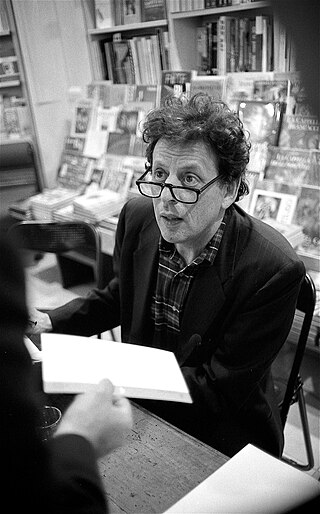
Hydrogen Jukebox is a 1990 chamber opera featuring the music of Philip Glass and the work of beat poet Allen Ginsberg. Its name is taken from a phrase coined by Ginsberg, from his 1955 poem Howl.
Steve Clay Wilson was an American underground cartoonist and central figure in the underground comix movement. Wilson attracted attention from readers with aggressively violent and sexually explicit panoramas of lowlife denizens, often depicting the wild escapades of pirates and bikers. He was an early contributor to Zap Comix.

Desolation Angels is a semi-autobiographical novel written by Beat Generation author Jack Kerouac, which makes up part of his Duluoz Legend. It was published in 1965, but was written years earlier, around the time On the Road was in the process of publication. The events described in the novel take place from 1956-1957. Much of the psychological struggle which the novel's protagonist, Jack Duluoz, undergoes in the novel reflects Kerouac's own increasing disenchantment with the Buddhist philosophy. Throughout the novel, Kerouac discusses his disenchantment with fame, and complicated feelings towards the Beat Generation. He also discusses his relationship with his mother and his friends such as Allen Ginsberg, Neal Cassady, Lucienn Carr and William S. Burroughs. The novel is also notable for being a relatively positive portrayal of homosexuality and homosexual characters, despite its use of words that were at the time considered homophobic slurs.
Carolyn Elizabeth Robinson Cassady was an American writer and associated with the Beat Generation through her marriage to Neal Cassady and her friendships with Jack Kerouac, Allen Ginsberg, and other prominent Beat figures. She became a frequent character in the works of Jack Kerouac.

Who'll Stop the Rain is a 1978 American crime film directed by Karel Reisz and starring Nick Nolte, Tuesday Weld, Michael Moriarty, and Anthony Zerbe. It was released by United Artists and produced by Herb Jaffe and Gabriel Katzka with Sheldon Schrager and Roger Spottiswoode as executive producers. The screenplay was by Judith Rascoe and Robert Stone, based on Stone's novel Dog Soldiers (1974), the music score by Laurence Rosenthal, and the cinematography by Richard H. Kline. The movie was entered in the 1978 Cannes Film Festival.

The Fall of America: Poems of These States, 1965–1971 is a collection of poetry by Allen Ginsberg, published by City Lights Bookstore in 1973, for which Ginsberg shared the annual U.S. National Book Award for Poetry. It is characterized by a prophetic tone inspired by William Blake and Walt Whitman, as well as an objective view characterized by William Carlos Williams. The content is more overtly political than most of his previous poetry with many of the poems about Ginsberg's condemnation of America's actions in Vietnam. Current events such as the Moon Landing and the 1968 Democratic National Convention, the death of Che Guevara, and personal events such as the death of Ginsberg's friend and former lover Neal Cassady are also topics. Many of the poems were initially composed on an Uher Tape recorder, purchased by Ginsberg with the help of Bob Dylan.
Richard William McBride was an American beat poet, playwright and novelist. He worked at City Lights Booksellers & Publishers from 1954 to 1969.
"Wichita Vortex Sutra" is an anti-war poem by Allen Ginsberg, written in 1966. It appears in his collection Planet News and has also been published in Collected Poems 1947-1995 and Collected Poems 1947-1980. The poem presents Ginsberg as speaker, focusing on his condemnation of the Vietnam War. It features imagery of the war and America's Heartland interspersed with news reports and cultural references. It is also written in Ginsberg's distinctive Whitman-like long-prose style.
Justin W. Brierly was an American educator and lawyer. Born to a Colorado pioneer family and educated at Columbia and the University of Denver Law School, he was noted in his work in secondary education for his efforts to place students into prominent universities, and as a patron of the performing arts in Colorado. He is also remembered for his association with Beat Generation icons Neal Cassady and Jack Kerouac.
The Last Times was a tabloid underground newspaper published in San Francisco in 1967 by beatnik poet and printer Charles Plymell. It lasted only two issues, but included work by William Burroughs, Claude Pelieu, Allen Ginsberg, and Charles Bukowski.

Move Under Ground is a horror novel mashup by American writer Nick Mamatas, which combines the Beat style of Jack Kerouac with the cosmic horror of H. P. Lovecraft's Cthulhu Mythos. It is available as a free download via a Creative Commons license, CC BY-NC-ND 2.5 according to the License information in the CC version of the book.
Claude Pélieu was a French poet, translator and artist. He lived in France until 1963, when he moved to the United States, where he spent most of the rest on his life.
Haldon Chase, often referred to as "Hal Chase", was a Denver-born archaeologist, who was known for his archaeological research on several rock art sites at Colorado. Outside the field of archaeology, he was best known as part of the earliest Beat circle.
